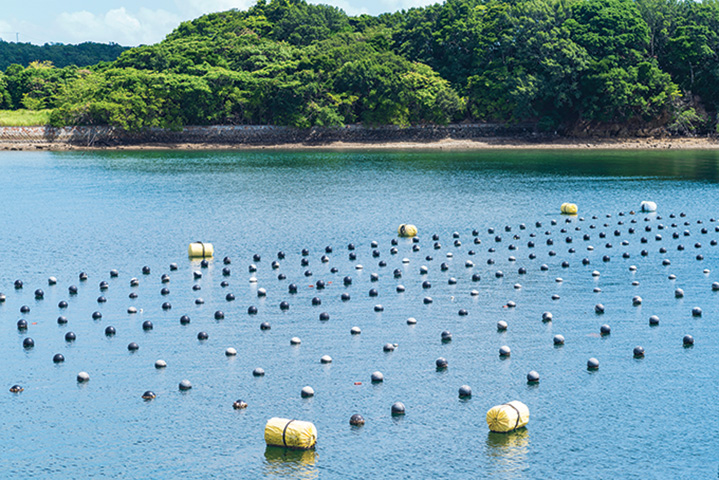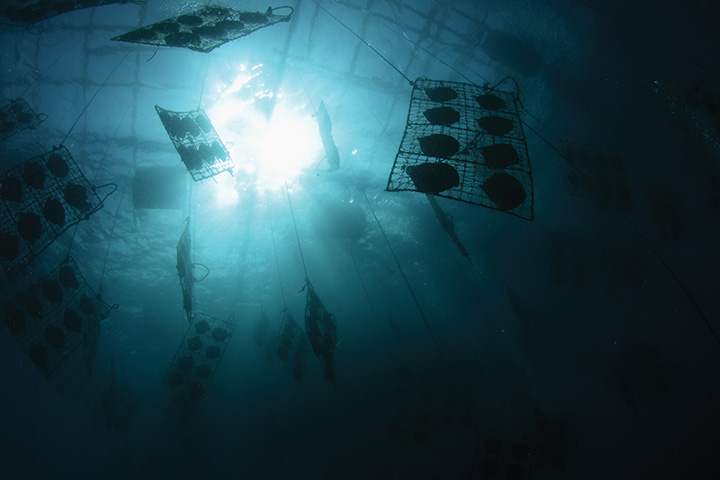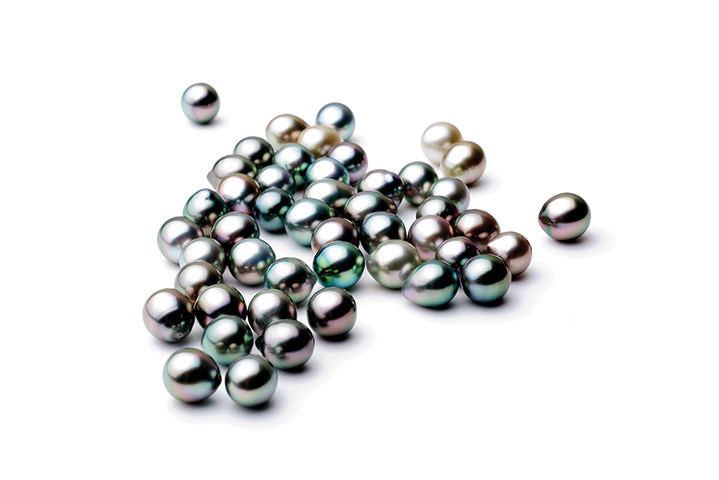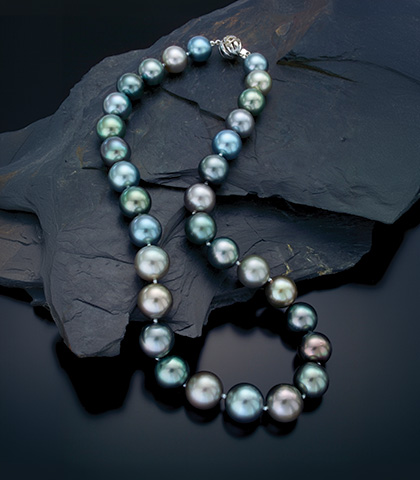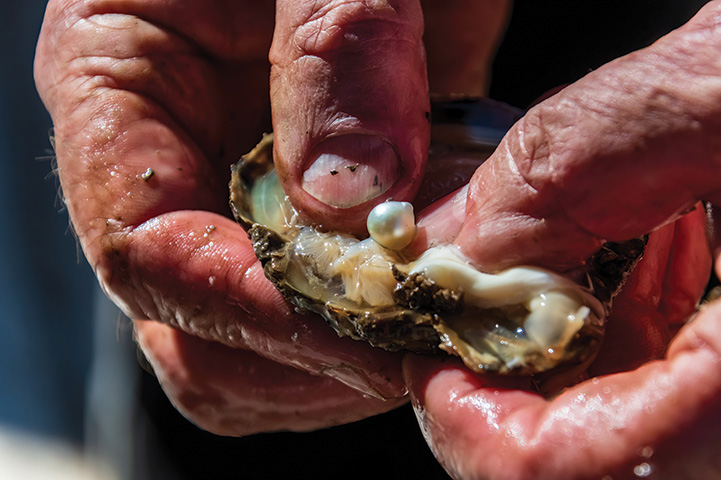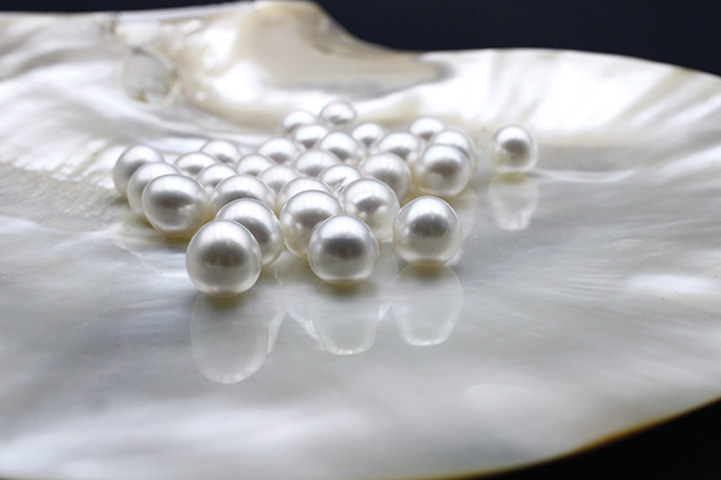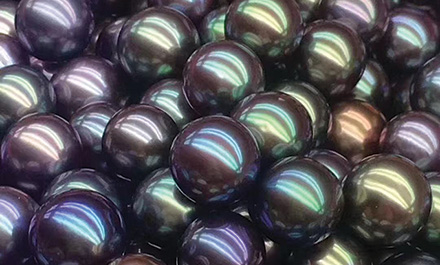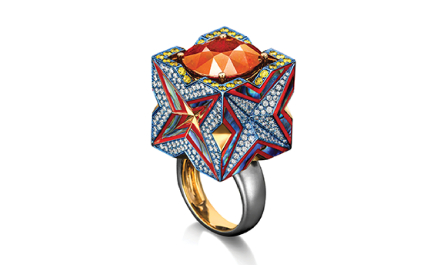The pearl industry is witnessing a renaissance of sorts, ushered in by shifting perceptions of the pearl among a more discerning clientele. At the centre of this are progressive business strategies of major companies aimed at ensuring a sustainable future for the coveted gem.
This article first appeared in the Pearl Report 2024-2025.
The global pearl trade witnessed an exponential increase in business in 2023, bolstered by robust demand from the Asian market. High on buyers’ shopping lists were premium-quality pearls in impeccable shape and lustre alongside smaller-sized pearls, which have risen in popularity among younger consumers. Classic and sophisticated motifs remain extremely sought after but trendier, more unconventional designs are also gaining ground, giving the pearl an edgier appeal.
Understanding of and appreciation for pearls are also changing, notably among this younger clientele. This, in turn, could bolster long-term demand as these consumers mature and their purchasing power grows.
According to industry players, while demand has been gradually stabilising from the highs of 2023, market appetite for pearls will remain unabated.
The sustainable nature of pearls and the process by which they are cultivated and produced also present a strong value proposition. More so today than ever, green practices coupled with innovative business strategies and the pearl’s versatile aura resonate heavily with increasingly perceptive and environment-conscious consumers.
Hence, pearl companies are gearing up for a brighter future – one that places the beloved gem at the crux of groundbreaking jewellery designs, technology-driven farming and production, and sustainable development.
Market overview
According to Jacques Christophe Branellec, CEO of Philippines-based Jewelmer, the year 2023 was favourable for the company, owing to soaring fascination for the golden South Sea pearl.
“With rising demand for this rare gem, prices increased as well. We are delighted to observe that wholesale traders are also confident in the market and in the brand’s offerings,” said Branellec.
Michael Bracher, executive director of Australia-based pearl specialist Paspaley, noted that steady price increases occurring since 2021 was followed by a correction at the beginning of 2024. Prices have since risen again on the back of a demand upswing.
In terms of markets, Asia – China in particular – saw the most significant uptick in demand while Europe and North America are likewise performing well.
“All markets are benefiting from the growing perception of pearls as a fashionable and versatile gem. Chinese demand leans to top-quality classic shapes such as rounds, drops and ovals. As prices for these sought-after categories have risen, interest in the more affordable shapes and qualities has grown in other markets,” explained Bracher.
Rio Pearl Director Jonathan Cheng, for his part, attributed high prices to persistent market demand for top-tier pearls. A factor fuelling this trend is that fewer companies are now capable of producing such exceptional gems, noted Cheng.
Demand is particularly strong in Southeast Asia where white and golden South Sea pearls are all the rage. Premium-quality pearls in a variety of colours likewise enjoy solid market demand while smaller pearls move the fastest, driven by rising interest among the younger generations.
Meanwhile, the Tahitian pearl market is experiencing a period of transition. Cheng explained, “Demand for excellent-quality round and near-round Tahitian pearls with vibrant and diverse colours remains steady, but interest in less conventional shapes is declining. Unstable supply and varying export volumes also present challenges. Limited supply of premium pearls could continue.”
George Kakuda, president of the Japan Pearl Exporters’ Association (JPEA), also attested to stable demand for pearls, including the coveted Japanese Akoya pearls. Kakuda said buyers are partial to mid-range items of around 3mm to 8mm in size, especially the larger pearls.
Technology at the farms
Japan is a pioneer in the pearl farming sector, with the founder of pearling giant Mikimoto successfully creating the world’s first cultured pearls in 1893. Fast forward to 2024, Japanese pearl companies continue to lead advances in pearl farming and cultivation.
According to Kakuda, the Japanese pearl industry is set to implement in 2024 results of a 10-year biogenetic study to grow stronger, healthier oysters and produce higher-quality pearls.
Over in Myanmar, Hong Kong-based Rio Pearl is making waves in product diversification by employing modern techniques to produce innovative new pearl variants.
In 2023, the company unveiled golden South Sea pearls exhibiting vivid streaks of red, pink and green, which it named Rainbow Gold. Cheng of Rio Pearl said the journey to achieving this revolutionary product took a great deal of research and tests over the course of three years.
A naturally occurring variant of golden South Sea pearls, Rainbow Gold would occasionally appear in Rio Pearl’s harvests in miniscule proportions, but eventually, the company was able to produce entire lots of such premium-quality pearls.
In early 2024, Rio Pearl introduced top-quality white South Sea pearls from its farms in the Mergui Archipelagos of Myanmar. This was a first for a country that predominantly produces golden South Sea pearls.
Myanmar traditionally grows over 99 per cent golden South Sea pearls, so the emergence of these premium white South Sea pearls, which the company named M White South Sea, in Myanmar is truly revolutionary.
A horizon of opportunities
The pearl sector is poised for further growth, largely fuelled by solid consumer demand and sustained innovations. New pearl markets, meanwhile, are also a source of optimism.
Bracher of Paspaley noted, “On a macro view, we see the emergence of a strong market in India as the biggest market-changing opportunity. Like China, India has a cultural affinity with pearls. India’s economic growth could unleash a wave of new demand to complement the existing markets.”
Branellec, for his part, identified several key factors that could drive growth in the loose pearl and pearl jewellery business in the coming years. China, for instance, has displayed growing interest in South Sea pearls.
“Our Chinese customers’ preferences are flourishing and maturing, and it is an honour to see their appreciation for the Philippine golden South Sea pearl,” shared Branellec. “The golden pearl symbolises prosperity and good fortune as depicted in Chinese artworks of dragons holding golden pearls in their mouths or claws.”
Jewelmer’s sales are also steadily growing in Europe and South America, with notable increases in demand and appreciation for South Sea pearls in countries such as Brazil, specifically among young people.
The company is looking to expand its presence into new markets over the coming months and years, with a primary focus on Southeast Asia.
Bracher, meanwhile, zeroed in on mounting interest in pearl jewellery among young consumers, which he described as “expressly encouraging for the medium and long-term outlook.”
The pearl’s versatile allure and wearability are making them even more endearing to the younger market. Trendier, more contemporary jewellery designs alongside a compelling sustainability agenda also play a critical role in attracting this new buyer demographic.
“To see them value authenticity is an encouraging indicator of the increasing awareness of such issues, and it is uplifting to see that the next generation is leaning towards environment-friendly practices,” added Branellec.
South Sea pearls are also striking a chord with male consumers, which present further opportunities for growth and expansion.
Amid ongoing market and geopolitical uncertainties, JPEA’s Kakuda said the key to sustaining growth and relevance in the trade is adding value to pearls.
“Transparency has become a very important factor for buyers. They want to know if the pearls were produced under sustainable conditions. And we should be prepared to answer these questions as this will make our pearls even more valuable and sought after,” noted Kakuda.
Pearls and sustainability
The sustainability narrative is gaining steam in most business categories around the world, but it has always taken precedence in the pearl sector. According to James Brown of Pearls of Australia, pearl farmers rely on Mother Nature, so there is a natural incentive for them to look after the planet and its people.
“Provenance is fundamental to who we are and what we do – it is not only the lineage of our pearls, but the cultural and family heritage that travel with them. We are totally committed to full transparency in the pearl value chain through dependable and economical protocols that measure the impact of pearl farming in a social and environmental context,” he noted.
Brown is a third-generation pearler involved in Pinctada maxima and Akoya pearl production and connected ecotourism in Australia.
The support of industry stakeholders is also indispensable. Tom Moses, executive vice president and chief laboratory officer at the Gemological Institute of America (GIA), said GIA aids pilot projects dedicated to educating and helping the pearling industry measure and manage their social and environmental impact.
For instance, the outcome of such studies revealed promising impact mitigation and market development opportunities throughout the pearl
value chain.
Chunhui Zhou, head of GIA Global Pearl Identification Division, also unveiled ongoing efforts to define the parameters of a scale for “nacre continuity.” The aim is to classify the continuity of the concentric nacre layer deposition around a pearl nucleus.
“This scale will provide more specificity and complete our pearl classification system in the near future,” noted Zhou. “Nacre continuity reflects the harmonious relationship between humans and nature needed to produce pearls.” - by Pierre Fallourd


